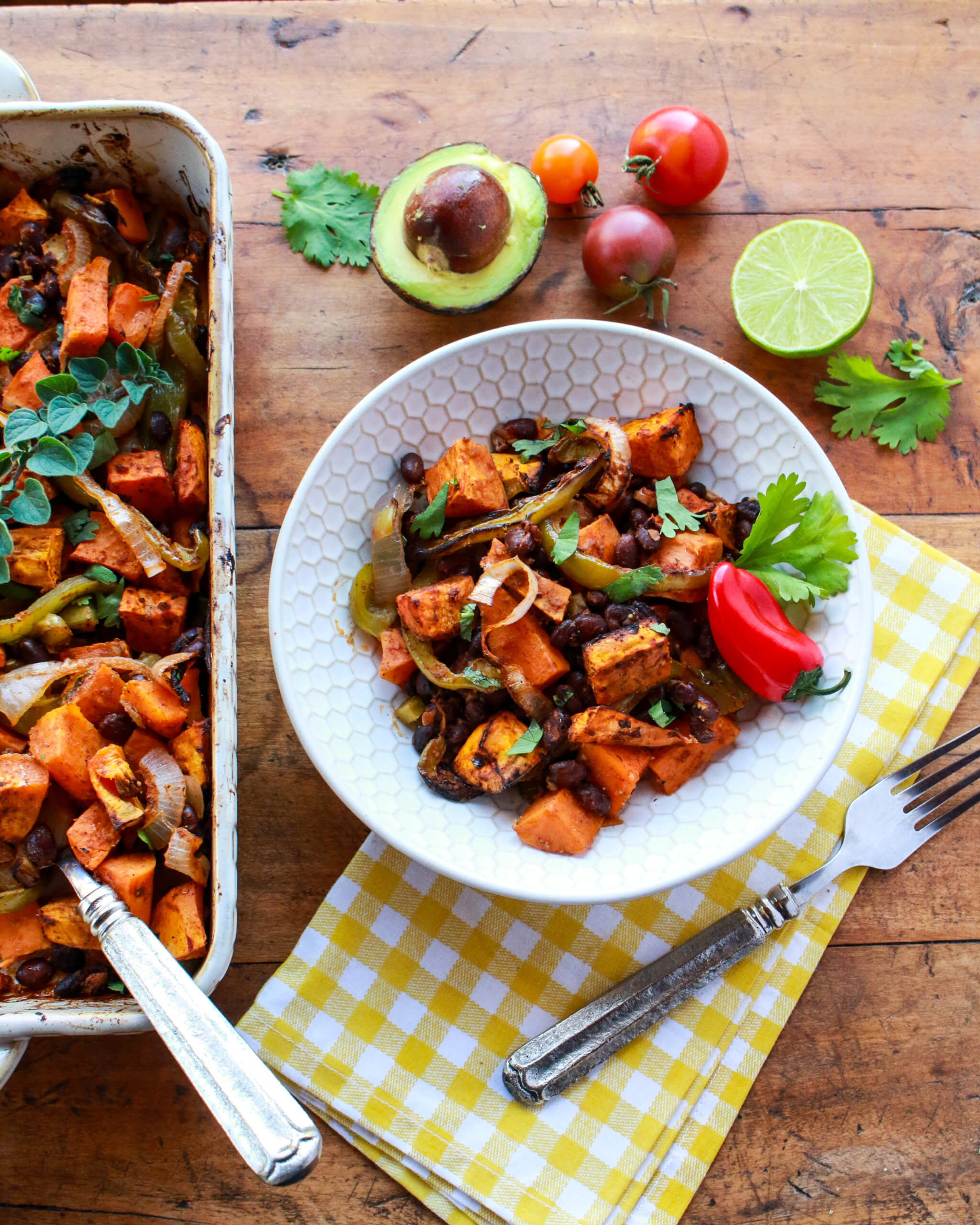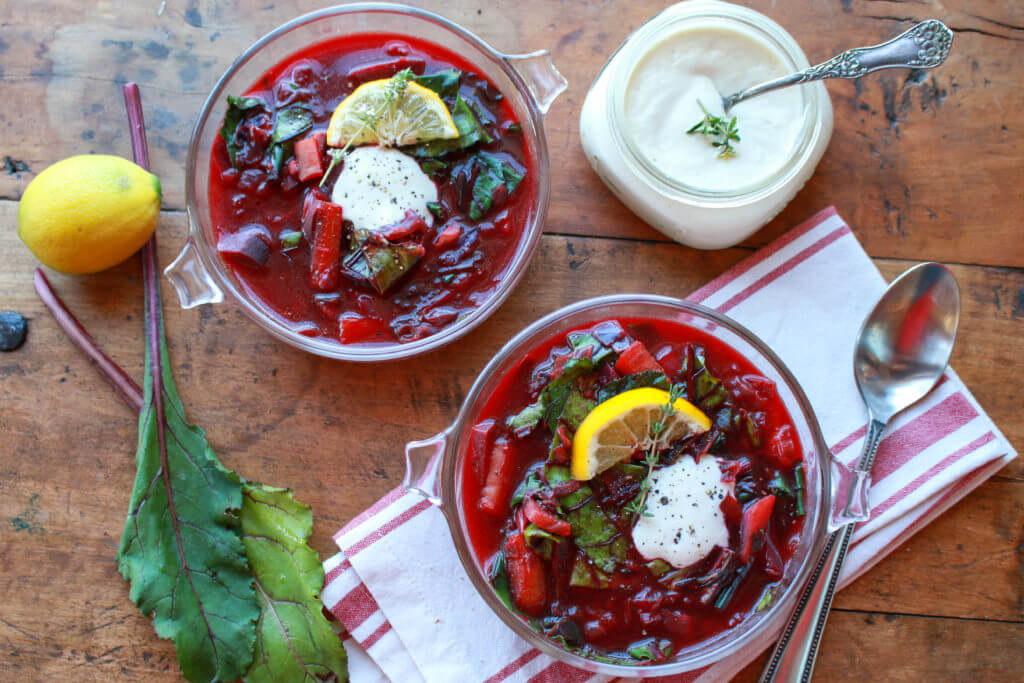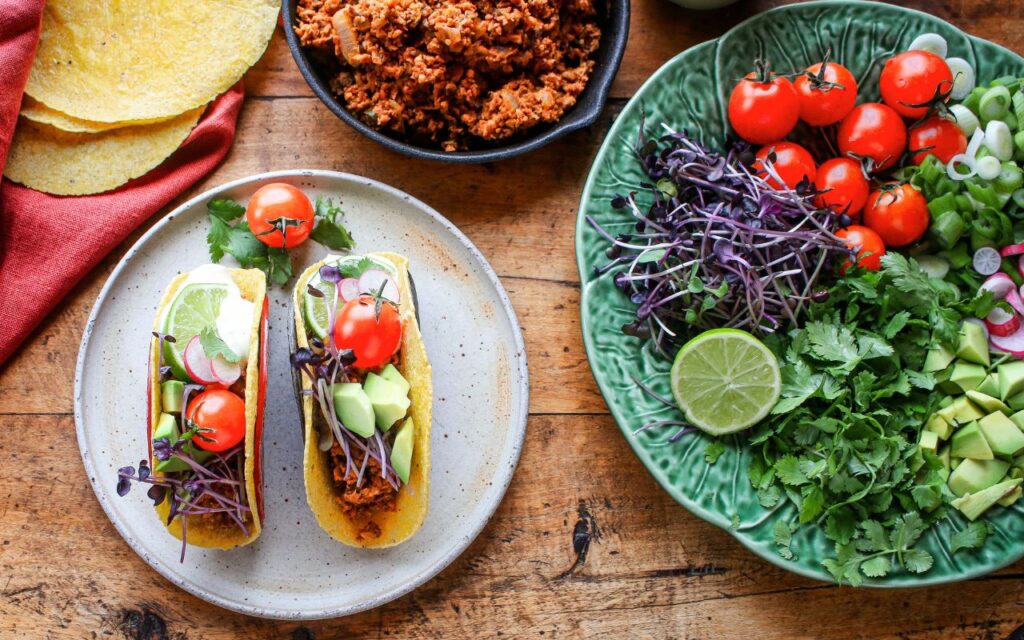The foods you eat every day make a big impact on your health, as well as the health of the planet. I’m answering your top questions on how your choices can support food sustainability in this Ask Sharon blog today.

Choosing foods that are more environmentally friendly is a top consumer trend. Surveys have shown that 59% of consumers consider sustainability when they make food choices. Indeed, the food system makes significant impacts on the planet, including fossil fuel consumption, carbon emissions, pollution, eutrophication, land usage, and water usage. And the choices you make three times a day can significantly impact your environmental footprint. But how do you prioritize food sustainability with your food dollars? Today, I’m answering your top nutrition questions on how to choose sustainable foods every day. Check out Food + Planet, the nonprofit organization I co-founded to learn more about food sustainability, and read this blog on lowering your environmental footprint through diet.
Question: How Can I Make Choices That Support Food Sustainability?
Sharon’s Answer:
Making more sustainable food choices is an important goal. One of the most powerful things you can do to lessen your impact on the planet is to change your eating style. In the past fifty years, the food system has changed vastly, as farms have gotten bigger and more specialized, using more chemicals and fossil fuels to produce foods, and resulting in greater loss of biodiversity and wildlife, as well as greater negative impacts on soil, water, and air. Check out this interview on how modern agriculture has changed. Here are a few of my tips for making more sustainable food choices in the supermarket aisle, plus some of my favorite planet-friendly recipes.

1. Avoid Highly Processed Foods
If a food product has been through many steps in manufacturing, with lots of ingredients coming from all corners of the world, the carbon footprint is higher for that product, due to traveling, manufacturing, and distribution. Think a nutrition bar with a long list of ingredients vs. a handful of nuts, which came from one source with minimal processing.

2. Choose Nutritious Foods
Nutrient-rich foods are more sustainable because they use resources—water, farm inputs, soil—wisely to produce foods that contribute to good health. These foods include whole grains, vegetables, fruit, pulses (beans, lentils, peas), nuts, and seeds. However, using these precious resources to produce foods with poor nutritional quality is not sustainable (i.e., sugary soda, chips, candy), because you squander resources that could have been used to produce foods that nourish the body. Additionally, these low nutrient foods are linked with health risks.

3. Balance Calories.
This is one of the most serious sustainability issues, because producing food to be consumed in excess of the calories we need wastes resources. America produces far more calories in our food supply than we need for daily subsistence. At the same time about 13% of Americans are food insecure, and about 13% of Americans live in food deserts, where healthful foods are not available. Being mindful of our food intake is an important step towards making better choices.

4. Avoid Purchasing Fresh Foods Out of Season
Foods that travel long distances are not typically sustainable. When you purchase fruits in the winter from far away countries that are flown in by air, the environmental impact is high. However, keep in mind that some places are more efficient at growing things even if they are a bit farther away. For example, California’s climate may make some produce a more sustainable option than buying produce that was grown in a heated greenhouse in cold regions. Your best bet is to follow the seasons in your food choices and eat more locally.

5. Use Preserved Foods in the Off Season
Preserved foods that are lightly processed, such as canned, dried, and frozen, are more sustainable options during the off season, compared to produce that is grown in heated greenhouses or shipped in from far away places (air transport is the worst). Preservation of foods is a practice that humans have been following through the eons as a means of survival.

6. Consider Organic Foods
Organic food regulations significantly limit the synthetic pesticides that can be used in crop production, and they support more sustainable soil practices, such as the use of cover crops, composting, and manures. If you can afford organic food purchases—in particular for produce—you may want to prioritize it. Learn more about organic foods here.

7. Reduce Food Packaging
The packages (cereal boxes, clam shells, individual cups) can make a huge impact on sustainability, as packaging fills up landfills. Select minimally processed whole foods with little packaging as your best bet. After all, a banana and a sweet potato have natural packaging.

8. Trim Food Waste
This is a significant factor in sustainability, because about 40% of all food produced in the U.S. is never eaten. Unfortunately, we use vast resources—soil, water, fossil fuels, crop inputs—to produce food that is never eaten. Food waste primarily occurs at the consumer level, where people can make a difference. Learn more about how to trim food waste here.

9. Limit Your Number of Food Shopping Trips
Studies show that traveling to buy groceries may be very impactful in the total number of miles foods travel to get to your plate. So try limiting the number of trips you make, and condense your food travel trips to take advantage of your location. For example, if you’re headed to the farmers market, do all of your food-related trips in that nearby location for the week. And remember that food miles—the number of miles food travels to get to your plate—is an important part of sustainability, but the production of food has a potentially larger impact on sustainability.

10. Reduce Meat Consumption
Research consistently shows that animal foods—in particular red meat and dairy—have a much larger carbon and water footprint than plant foods do. That’s because in todays’ modern agriculture, we grow plants to feed to animals, which are inefficient convertors of plants into food. We could cut out the middleman (animals) and eat those plants directly. In addition, ruminants produce a large amount of methane during their lifetimes. People who eat completely plant-based diets can have almost half the carbon footprint of omnivores. Learn more about how to eat a more plant-based diet here.

11. Grow Some of Your Own Food
One of the most sustainable things you could ever do is to start a garden—even starting with one pot on your patio. No food miles, no packaging, no fossil fuels, plus the joy of spending time in the soil with living breathing plants under the glorious sun. What could be more sustainable than that? Check out my free home gardening toolkit here.
Check out the other nutrition questions I’m answering at The Plant-Powered Dietitian:
Ask Sharon: Is Oat Milk Good for You?
Is Fat Good For You?
What Are the Differences in Plant-Based Types of Diets?
How to Get Complete Protein in a Plant-Based Diet?
Does Roasting Vegetables Ruin Nutrients?
Why Do Beans Cause Gas?
What to Put in a Salad To Make it Healthy?
More Tools for Eating and Living the Goodness

